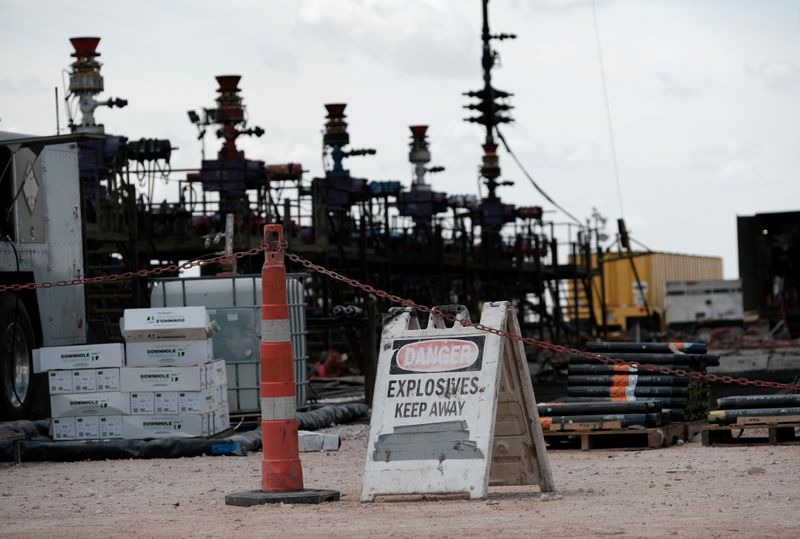By Liz Hampton
(Reuters) - As the Biden administration and allies scramble to deliver more oil to market through stockpile releases, shale producers are tapping the brakes on reinvestment, according to new data, a sign of the widening split between U.S. oil companies and Washington.
That restraint has become the latest friction point between oil producers and the White House. On Tuesday, President Joe Biden launched coordinated oil stockpile releases with China, India, Japan and South Korea after efforts to cajole OPEC and U.S. producers to speed up production failed.
The rate at which U.S. shale producers put cash from operations into drilling for oil and gas fell to a record low last quarter, data from consultancy Rystad Energy showed, as those firms returned cash to shareholders through dividends and stock buybacks.
The third-quarter reinvestment rate was 46%, below the historical average of 130%, Rystad said in a report this week. Reinvestment could fall further, its analysts said.
LIMITED NEW OIL
U.S. shale companies are targeting flat to 5% production growth next year, while private companies and oil majors combined could add up to 500,000 bpd by December 2022, said Rystad.
The rate of growth has kept U.S. oil production below the peak. The United States in October pumped around 1.5 million barrels per day (bpd) fewer than the 12.97 million bpd peak two years ago, the U.S. Energy Information Administration said. Next year, output is forecast to average 11.9 million bpd.
Shale companies contacted by Reuters, including EOG Resources Inc (NYSE:EOG) and Diamondback (NASDAQ:FANG) Energy Inc, declined to comment on the coordinated release of petroleum reserves, which could drive down oil prices. But their modest spending from rising profit shows they are not falling back on old habits.
"Prolific shale production was a buffer to market perturbations and it isn't there any more," said Kevin Book, managing director at research firm Clearview Energy. He attributes the limited gains to "a more cautious shale patch."
It has not helped that Biden has criticized oil companies for putting shareholders ahead of the economy and has called on regulators to probe whether oil firms drove gasoline prices to a 7-year high.
The administration wants more supply from U.S. oil producers to reduce pump prices, Energy Secretary Jennifer Granholm said on Tuesday, pointing to rising industry profit.
"Biden is getting rid of pipelines and messing with permits and making it difficult to operate,” said Harris Kupperman, chief investment officer at Praetorian Capital. Talk about excess profits only aggravates producers, he said.
'BANDAGE' FOR CONSUMERS
"The release of the SPR is strictly a bandage and the only way to create a sustainable lower price and stability is encourage drilling in North America and create a regulatory environment that makes it economical and sustainable,” said Paul Mosvold, president and COO of oil drilling firm Scandrill.
The American Petroleum Institute, the industry's top lobby group, also blamed the reluctance to invest more on Biden's rejection of new oil pipelines and pause on leasing federal land.
“When the administration signals they want to move wholly off of fossil fuels within a foreseeable time period, that makes financing more difficult," said Dean Foreman, the API's chief economist.
Oil companies are having to spend more to keep output flat. This year's outlays rose 15% over 2020 to get to modest increases, estimates investment firm Cowen. Next year's outlays will rise between 20% and 25%, with some of the gains chewed up by inflation.

Higher costs for oilfield services will consume 10% to 15% of next year's outlays, estimates Jonathan Godwin of energy tech firm Enverus.
Contributing to the weaker growth are declines in the number of wells drilled and waiting to be turned on. They fell to a 4-year low this fall.